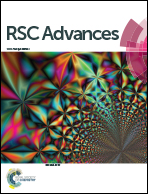Pneumatic conveying printing technique for bioprinting applications†
Abstract
Droplet-based bio-printing (DBB) techniques have been extensively accepted due to their simplicity, flexibility and cost performance. However, the applicability of inkjet printing for bioprinting techniques still faces challenges, such as a narrow range of available bio-ink materials, cell damage due to the pressure strike and high shear rate during the printing process. Here, a new droplet-based printing technique, pneumatic conveying printing (PCP), is described. This new technique is successfully adopted for cell-printing purposes. The cells present in the bio-ink are not exposed to any significant pressure and therefore the PCP technique is gentle to the cells. Furthermore, PCP allows the usage of inks with viscosities higher than 1000 mPa s, enabling the usage of bio-inks with high cell concentrations (several tens of millions per millilitre). As a proof of concept, two different cell types were printed with this novel technique. To achieve a printing resolution of 400 to 600 μm, cells were encapsulated into a hydrogel containing calcium alginate. Deposition of the bio-ink drop containing sodium alginate on a surface pre-treated in CaCl2 solution, ensures a fast cross-linking reaction and the formation of gel drops. Cells encapsulated in the alginate gel survive and proliferate. Our novel PCP technique is highly suitable for 2D and 3D cell bio-printing.



 Please wait while we load your content...
Please wait while we load your content...